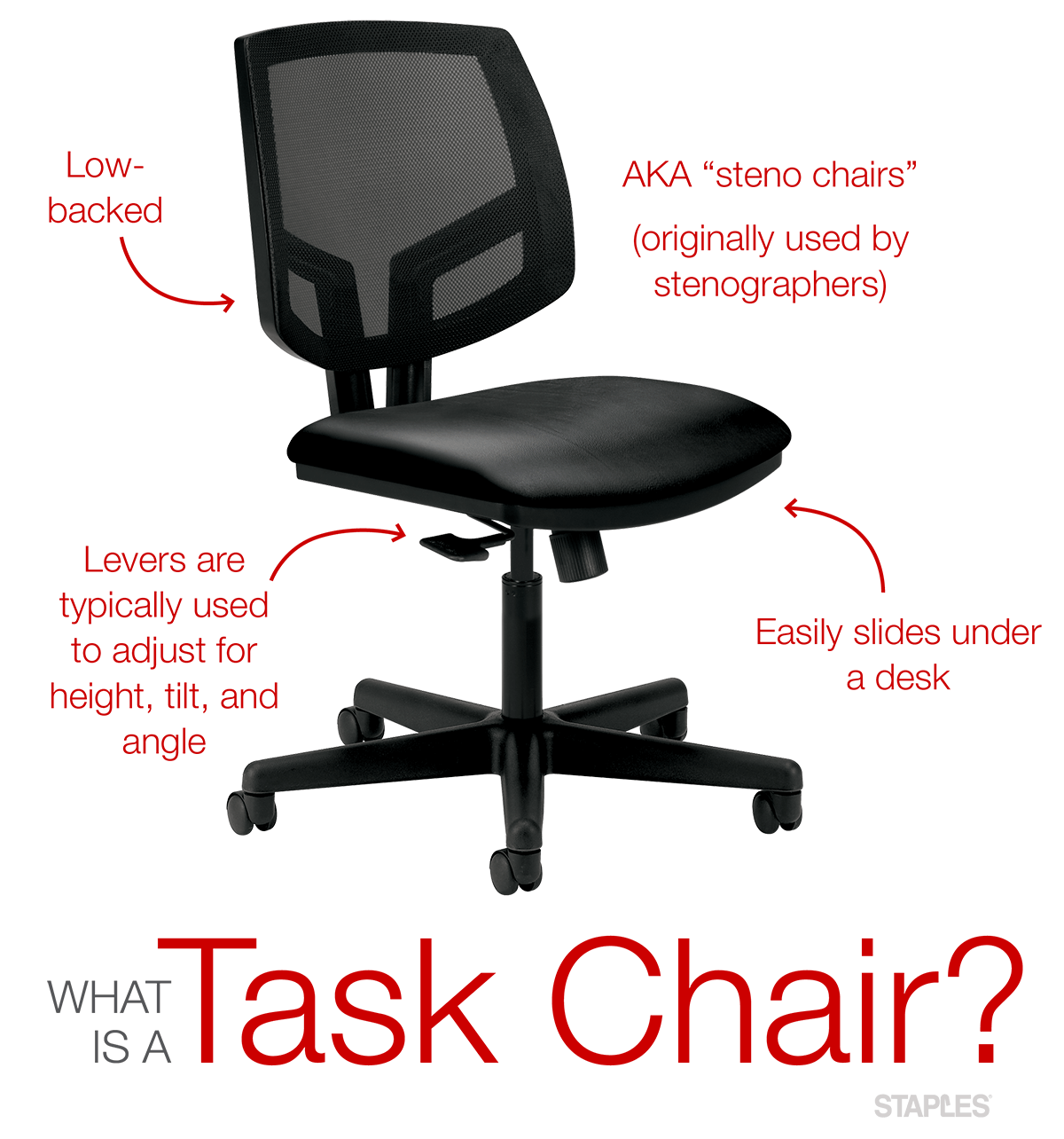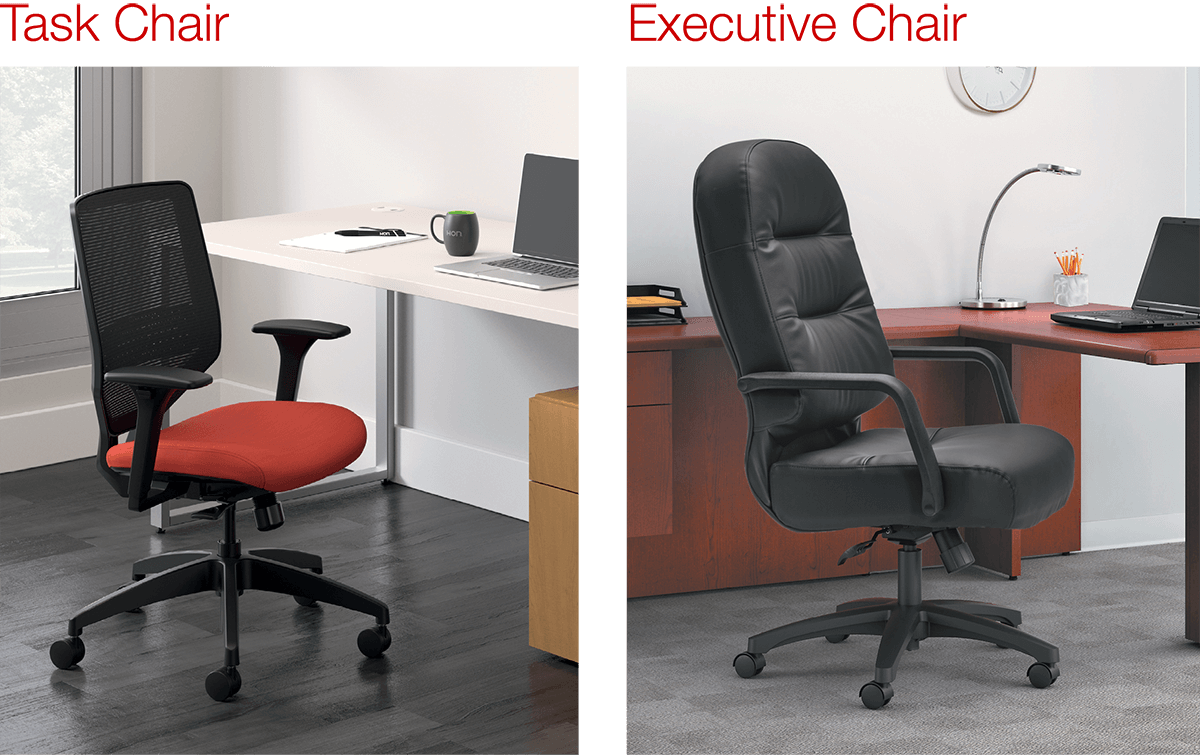What is a Task Chair?

When choosing an office chair, it’s important to know who will be sitting in it and what they will be doing. Different chairs are better suited to different tasks. Some chairs are more all-purpose in nature and can be used for different functions by different people in an office environment.
What is a Task Chair?
Task chairs, by definition, are functional chairs that are suitable for a variety of activities and body types. These popular, low-backed chairs come with or without arms and are popular fixtures within an office or academic setting.
Sometimes referred to as “steno chairs,” these task chairs were originally used by stenographers, and employees who worked in a typing pool / secretarial capacity.
Because task chairs are used by a wide variety of people, they’re commonly found in shared employee spaces and workstations. Because they easily slide under a desk and are often relatively inexpensive, they are a great choice for students and can often be found in dorm rooms, student computer facilities, or libraries.
What’s the Difference: Task Chair vs. Executive Chair
Due to their low back and no-fuss nature, task chairs are one of the most portable types of office chairs. They’re easy to move from room to room on an as-needed basis. Executive chairs (sometimes called “manager chairs”) are typically bigger and more impressive looking. However, due to their size, executive chairs aren’t as easily moved and usually relegated to staying in the boardroom or other executive hangout—adjusted and ergonomically fitted to suit the person who sits in it on a regular basis. Both chairs can be comfortable, adjustable, and adhere to good ergonomic principles, but task chairs lend themselves to easier migration throughout the office.

What To Look for in a Task Chair
Since task chairs are the utility players of the office chair world, one of their best features is that they’re often quite economical. As always, all types of chairs vary in price and have different features. Here are a few considerations to keep in mind when shopping for task chairs for your office:
- Adjustability.
- Most task chairs use a lever to adjust it for the height of the occupant. However, not all task chairs will have multi-tilt functionality.
- With or without armrests.
- A study by Cornell University found that chairs with armrests are beneficial for those who do a lot of typing. If your task chair will be used by individuals who do a lot of typing, it may be a wise investment to choose one with armrests. However, if your task chair may be bound for a common space in the office—think conference room or brainstorming think tank—task chairs without armrests will more than suffice!
- Head off neck fatigue with a headrest.
- If task chairs will be used for activities such as proofreading or other reading-intensive endeavours, they should feature optional headrests. This can help encourage a more upright posture and eliminate “crane strain” on the neck and upper back from tilting your head forward to read documents.


